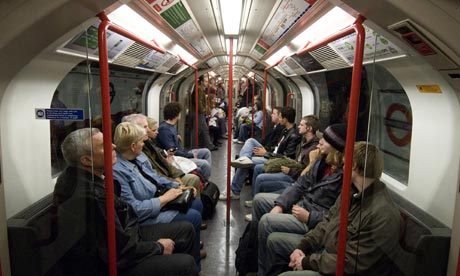
A new website with the slogan "Euston, we have a problem" aims to use the power of the crowds using British public transport to notify operators of problems with rail, bus, tube and even ferry services.
FixMyTransport, which launched on Tuesday, aims to "give you the tools to report your public transport problems to the correct operator or authority", and to post them online so that other people can see where problems are.
And, following representations from transport companies, there will also be another option: to praise them for the quality of the experience.
The project, which is the result of 18 months' work by a lone developer, Louise Crow, uses the same idea as its older sibling FixMyStreet.com, which lets people contact their local council to report problems with roads such as potholes or fly-tipping and last year had more than 60,000 problems reported.
FixMyTransport has been open for limited user testing for some weeks and has already gathered a number of examples from users reporting their problems: one complained that the Woolwich Ferry's Greenland pier was in poor repair; the council renovated and fixed it soon afterwards.
The project is the latest brainchild of MySociety, a non-profit organisation created by Tom Steinberg – who now advises the government on better ways to open up government data – which has tried to make public data and information more accessible to the wider public.
Among its creations are PublicWhip.org, which lets people see how MPs vote, TheyWorkForYou, which republishes Hansard's proceedings from parliament in a more usable form, and WhatDoTheyKnow, which lets people lodge freedom of information requests with organisations quickly and easily.
The project has had support from Transport for London, which looks after transport in the capital involving trains, buses, underground trains, cycle hire and ferries, say Myfanwy Nixon of MySociety. "It gets very complicated because some operators' problems – say, with accessibility for wheelchair users – have also to be reported to TfL as well as the operator."
The key element that makes the site work is its database of contact details for all the operators, which Nixon says was collected in the same way that the site itself operates: by "crowdsourcing" online. "We put up a Google spreadsheet and asked people to enter the details," explained Nixon. "Some operators were very helpful – Arriva sent all their details in."
The site aims to become a rallying point for people who have persistent problems by allowing them to create a campaign page. "FixMyTransport then offers a powerful toolbox to help them spread the word and lobby for changes," says Nixon.
FixMyStreet has been copied around the world, from Brazil to South Korea, and MySociety is working on versions for the Dominican Republic and Philippines. "We hope that FixMyTransport will be similarly popular across the globe – after all, wherever you find a public transport system, there'll probably be something going wrong."
The key elements in working out which operators are responsible for each part of a journey has come via the government's open data project Data.gov.uk, launched in January 2010. The data for FixMyTransport comes from the National Public Transport Data Repository (NPTDR) and National Public Transport Access Nodes (NaPTAN) data sets, which provide route names, stops and operators. More than 400,000 bus, train, tube and tram stops are represented on individual pages.

